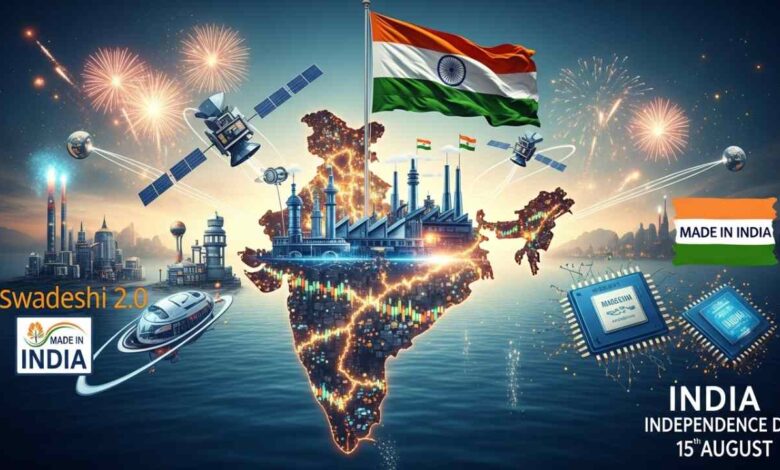Happy Independence Day: Swadeshi 2.0 – A New Chapter in India’s Economic Awakening

Happy Independence Day: Swadeshi 2.0: The main goal of India’s Swadeshi 2.0 movement is to establish India not just as a consumer market but as a major producer and innovator on the world stage. This new Swadeshi movement is redefining India’s economic landscape, giving a new dimension to the country’s dream of self-reliance.
Historical Context of the Swadeshi Movement
The history of the Swadeshi movement in India is quite old. The first Swadeshi movement was launched against the British in 1905, with the main objective of promoting indigenous production by boycotting British goods. It was a political weapon as well as a means of achieving economic self-sufficiency. After independence, India adopted an import substitution policy, imposing heavy taxes on foreign goods. However, this policy failed due to a lack of technology and skills, and in 1991, India had to embark on the path of economic liberalization. As a result, India became a large market for foreign goods, but domestic production could not progress much.
Swadeshi 2.0: A New Concept
Swadeshi 2.0 is very different from the old concept. Its main foundation is to keep pace with the world not by being isolated from it, but by increasing its own production capacity. The main aspects of this new policy are:
- Production and Innovation: The goal of Swadeshi 2.0 is to make India a major producer and innovator.
- Self-reliance: To make the country self-reliant in high-tech defense equipment, consumer goods, and infrastructure.
- Participation in the Global Supply Chain: To increase India’s participation in the global supply chain and maintain strategic independence.
- “Vocal for Local”: To support domestic products through campaigns like “Vocal for Local.”
Geopolitical Context and Driving Forces
Recent geopolitical changes in the world and trade conflicts between different countries have forced India to rethink its economic independence. Prime Minister Narendra Modi and President Droupadi Murmu’s recent speeches have also emphasized the use of Indian products. There are some major driving forces behind this:
Get Instant News Updates!
Join on Telegram- Government Policies: “Make in India” (2014), “Atmanirbhar Bharat,” and Production Linked Incentive (PLI) schemes for various sectors.
- Economic Pressure: Increase in Foreign Direct Investment (FDI) and Indian companies investing abroad.
- Technological Capability: India’s progress in space research (ISRO), semiconductors, artificial intelligence (AI), and drone technology.
India’s New Identity: Producer and Global Attraction
India is no longer just a destination for foreign companies to sell their products; it is also emerging as an exporter. India’s consumer market is projected to become the world’s second-largest by 2030. As a result, it will become imperative for global organizations to adopt a “produce for India first” policy. Indian companies are also investing globally and bringing new technology back to the country.
Challenges and the Future
Although the direction of Swadeshi 2.0 is correct, there are still some challenges. Increasing the share of manufacturing in the GDP from 16% to 25%, reducing dependence on imported components, and filling the infrastructure gap are major challenges for India now. However, this new Swadeshi movement is showing a new direction for India’s economic future, which is capable of taking the country to new heights. Jai Hind! Vande Mataram! Bharat Mata ki Jai!

